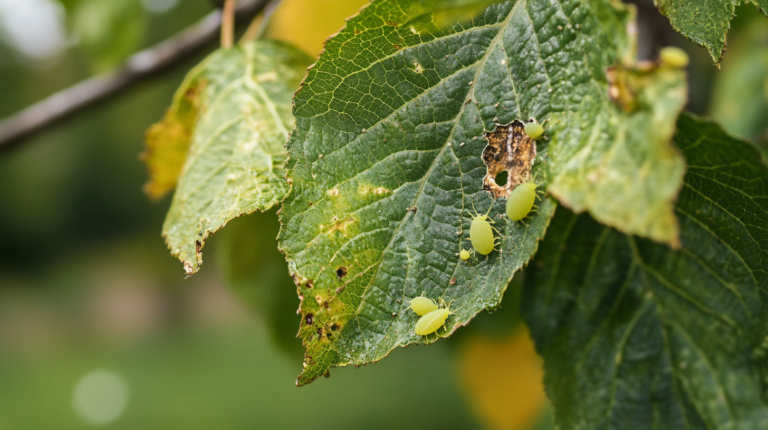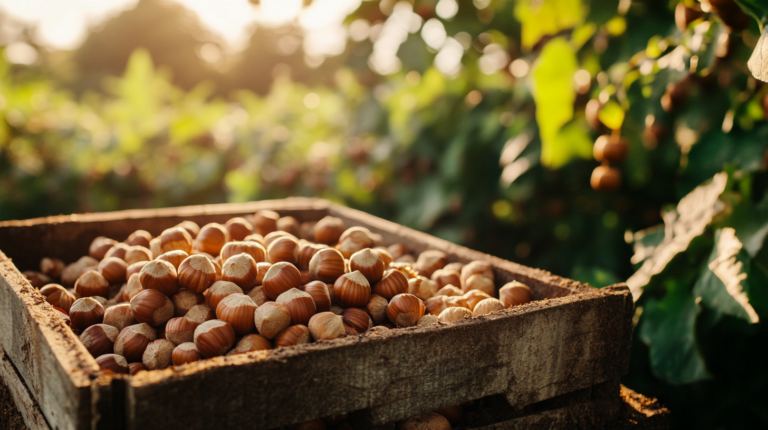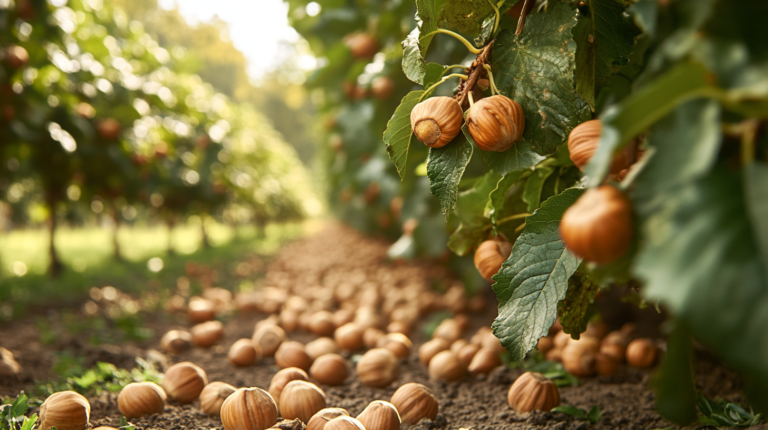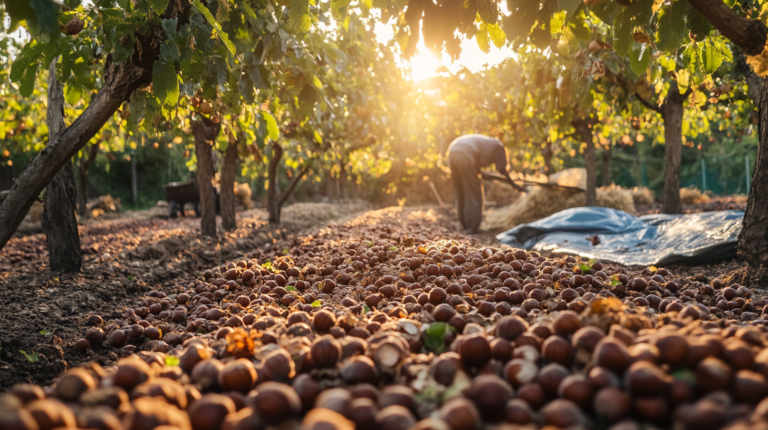Fertilizing Hazelnuts: What Nutrients Do They Need?
Introduction
Proper fertilization is essential for the successful cultivation of hazelnuts (Corylus avellana L.). Hazelnut trees require a balanced supply of nutrients to support growth, development, and nut production. This article explores the essential nutrients needed for hazelnut cultivation, focusing on both macronutrients and micronutrients. Understanding the role of each nutrient and how to apply them effectively will help growers optimize their orchards for higher yields and better-quality nuts.
Macronutrients
Nitrogen (N)
Nitrogen is crucial for the vegetative growth of hazelnut trees. It promotes leaf development and overall plant vigor, which are essential for photosynthesis and energy production. Nitrogen is typically applied in early spring to support new growth and again in late spring or early summer to sustain growth throughout the season. The recommended application rate depends on soil tests, but a general guideline is to apply 60-80 kg/ha per year (Bretzloff & Castle, 1976).
Phosphorus (P)
Phosphorus is vital for root development and energy transfer within the plant. It plays a significant role in the formation of ATP, which is crucial for energy storage and transfer in cells. Phosphorus should be applied at planting to establish a strong root system and supplemented as needed based on soil test results. Application rates typically range from 30-60 kg/ha per year, depending on soil phosphorus levels (Tombesi, 1993).
Potassium (K)
Potassium is essential for nut development, quality, and overall yield. It helps regulate water movement within the plant, supports enzyme activation, and improves disease resistance. Potassium is often deficient in soils, requiring regular supplementation. Studies have shown that varying doses of potassium (200-800 kg/ha K₂O) can significantly impact yield and quality (Aslantaş, 2006). Regular soil testing is necessary to determine the appropriate application rate for potassium.
Micronutrients
Boron (B)
Boron is vital for flowering, fruit set, and nut development in hazelnut trees. It plays a crucial role in cell wall formation and the movement of sugars and other nutrients within the plant. Boron deficiencies can lead to poor nut sets and reduced yields. It is typically applied in small amounts, often through foliar sprays, especially if soil tests indicate a deficiency. The recommended rate is around 1-2 kg/ha per year (Brown & Shelp, 1997).
Zinc (Zn)
Zinc is important for enzyme function and growth regulation in hazelnut trees. It is involved in the synthesis of auxin, a hormone that regulates growth and development. Zinc deficiencies can result in stunted growth and poor nut development. Zinc can be applied through soil amendments or foliar sprays if deficiencies are detected. The recommended application rate is 2-5 kg/ha per year (Marschner, 1995).
Iron (Fe)
Iron is essential for chlorophyll synthesis and overall plant health. It is a critical component of enzymes involved in photosynthesis and respiration. Iron deficiencies, which often manifest as chlorosis (yellowing of leaves), can be corrected with foliar applications or soil amendments. The recommended application rate varies based on soil tests but generally falls between 5-10 kg/ha per year (Mengel & Kirkby, 1982).
Soil Testing and Balanced Fertilization
Regular soil testing is critical for determining the specific nutrient needs and deficiencies in hazelnut orchards. Soil tests provide valuable information on pH levels, nutrient availability, and organic matter content. By tailoring fertilization practices to soil test results, growers can ensure that fertilizers are applied in the correct amounts and at the right times. Over-application of one nutrient can lead to imbalances and affect the uptake of other nutrients. A balanced fertilization program tailored to the specific needs of the orchard is essential for maintaining healthy and productive hazelnut trees (Reis, Oliveira, & Lopes, 2009).
Organic Matter and Soil Health
Incorporating organic matter into the soil can improve nutrient availability and soil structure, benefiting hazelnut trees. Organic matter, such as compost or well-decomposed manure, enhances soil fertility by increasing the soil’s ability to retain water and nutrients. It also promotes beneficial microbial activity, which aids in nutrient cycling and disease suppression. Regular additions of organic matter can help maintain a healthy soil ecosystem, ultimately supporting the long-term productivity of hazelnut orchards (Baldock & Skjemstad, 1999).
Conclusion
Fertilizing hazelnuts requires a strategic approach to ensure that all essential nutrients are available in the right amounts. Key macronutrients like nitrogen, phosphorus, and potassium play significant roles in growth and yield, while micronutrients such as boron, zinc, and iron are crucial for specific physiological functions. Regular soil testing and balanced fertilization practices are vital for maintaining healthy and productive hazelnut orchards. By understanding and meeting the nutritional needs of hazelnut trees, growers can optimize their orchards for higher yields and better-quality nuts.
References
Baldock, J. A., & Skjemstad, J. O. (1999). Soil organic carbon/soil organic matter. In K. I. Peverill, L. A. Sparrow, & D. J. Reuter (Eds.), Soil Analysis: An Interpretation Manual (pp. 159-170). CSIRO Publishing.
Bretzloff, L. L., & Castle, W. S. (1976). Fertilization of hazelnuts. Journal of the American Society for Horticultural Science, 101(3), 292-295.
Brown, P. H., & Shelp, B. J. (1997). Boron mobility in plants. Plant and Soil, 193(1-2), 85-101.
Marschner, H. (1995). Mineral Nutrition of Higher Plants (2nd ed.). Academic Press.
Mengel, K., & Kirkby, E. A. (1982). Principles of Plant Nutrition (3rd ed.). International Potash Institute.
Reis, M., Oliveira, A., & Lopes, J. (2009). Soil testing and fertilization for hazelnuts. Acta Horticulturae, 845, 449-454.
Tombesi, A. (1993). Phosphorus nutrition of hazelnut. Scientia Horticulturae, 53(1-2), 87-94.






